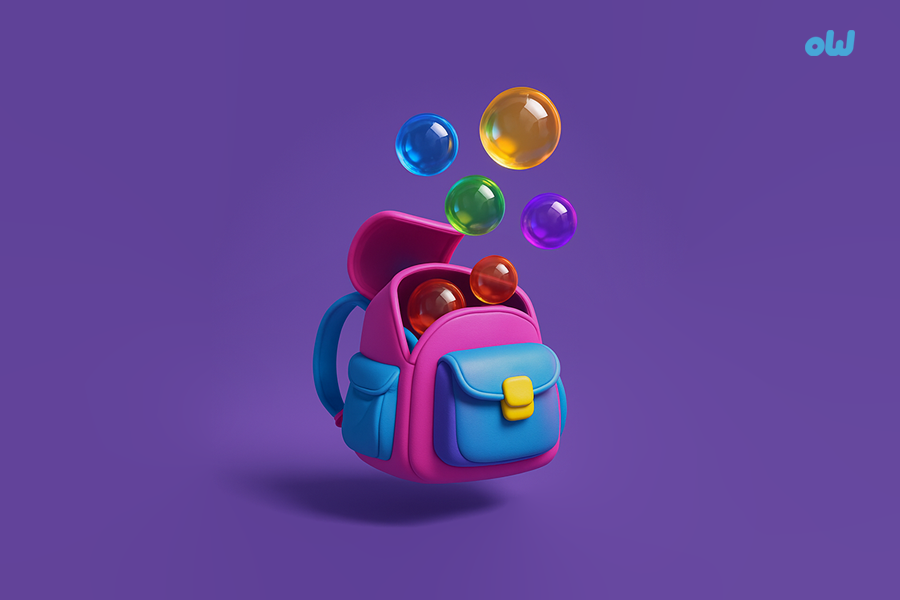Quiz: Which Inside Out 2 Character Are You?

Picture this for a moment: somewhere deep inside your head, right now, as you’re reading these lines, tiny beings are arguing about whether you should read this article to the end. Joy is already ready to hit the “Share with friends” button, Fear is warning about wasted time, and Curiosity… Curiosity has already taken our quiz and discovered which emotion governs your inner world. Ready to follow its lead?
What is “Inside Out 2” and Pixar’s World of Emotions?
“Inside Out 2” isn’t just a sequel to a popular animated film. It’s Pixar’s bold attempt to visualize what psychologists have been studying for decades: the complex ecosystem of human emotions. While the first film introduced us to basic emotions – Joy, Sadness, Fear, Anger, and Disgust – the sequel delves into the territory of teenage psychology, where new players emerge: Anxiety, Embarrassment, Envy, and Ennui.
Pixar’s genius lies in personifying abstract psychological processes. The studio drew upon Paul Ekman’s theory of basic emotions and modern research in affective neuroscience. Each character isn’t just a cute cartoon hero, but a carefully crafted metaphor for a specific emotional state with its unique functions in the human psyche.
The film revolutionized our understanding of emotional intelligence by showing that all emotions are important and necessary – even those we’re accustomed to considering “negative.” Sadness helps us process losses and receive support. Fear protects us from dangers. Anger signals violated boundaries. This concept aligns with modern approaches in psychotherapy, where accepting the full spectrum of emotions is considered key to psychological well-being.
What’s Our Quiz About?
Our quiz is a fascinating journey into the depths of your emotional landscape. Based on psychological principles and the characteristics of “Inside Out 2” characters, we’ve created a system of questions that helps determine which emotion plays the leading role in your personality.
This isn’t just entertainment. The quiz is built on principles of projective psychology, where your answers to seemingly simple questions reveal deep patterns of emotional response. We analyze your preferences in various life situations, decision-making style, stress reactions, and ways of interacting with others.
The quiz results are a mirror in which you can see the dominant emotional tendencies of your personality. This knowledge opens doors to better self-understanding and perhaps suggests which aspects of emotional life are worth developing to achieve greater harmony.
Main Characters You Can Get in the Quiz Results
Each “Inside Out 2” character isn’t just an animated emotion, but a complex psychological archetype with its own strengths and growth areas. By discovering your inner leader, you’ll gain valuable insights into how your emotional profile influences behavior, relationships, and life choices. Let’s get to know the possible quiz results more closely.
Joy – The Eternal Optimizer of the Inner World
Joy in “Inside Out 2” isn’t just a cheerful character with blue hair. She embodies our brain’s dopaminergic reward system, responsible for motivation, determination, and the ability to find positive moments even in difficult situations. People with dominant Joy possess high resilience – the ability to quickly recover from setbacks.
Psychologically, Joy is linked to extraversion and openness to new experiences. Such people easily make friends, inspire others, and often become informal leaders in groups. However, it’s important to remember: excess Joy can lead to toxic positivity, where a person ignores real problems and suppresses other important emotions.
Anxiety – The New Strategist of the Emotional Staff
Anxiety is one of the most significant additions in the second part. This character reflects the evolutionarily important function of foresight and planning. From a neurobiological perspective, Anxiety represents the activity of the amygdala and prefrontal cortex working in constant scanning mode for potential threats.
People with leading Anxiety are natural planners and organizers. They think through details, anticipate risks, and often save others from thoughtless decisions. In the professional sphere, they’re invaluable in project management, analytics, and strategic planning. The main challenge is learning to distinguish productive anxiety from paralyzing worry.
Sadness – Guardian of Depth and Empathy
Sadness has undergone amazing evolution from the first part to the second. From a character they tried to push to the background, she transformed into a recognized and important part of the emotional team. Neuropsychologically, Sadness is linked to subgenual cingulate cortex activity – a brain area responsible for processing social losses and forming empathy.
People with dominant Sadness possess amazing emotional depth. They’re capable of true compassion, know how to support in difficult moments, and often become the “soul of the company” in the deepest sense of the phrase. Their superpower is the ability to create genuine emotional connections and help others process complex feelings.
Anger – Defender of Boundaries and Justice
Anger is often underestimated, considered exclusively destructive. However, “Inside Out 2” shows its important protective function. From an evolutionary perspective, Anger is a rapid response system to threats and injustice, linked to noradrenaline release and sympathetic nervous system activation.
Personalities with leading Anger are fighters for justice, defenders of the weak, and catalysts for change. They don’t tolerate hypocrisy, know how to defend their boundaries, and often become lawyers, human rights advocates, or social activists. The key skill is transforming raw anger energy into constructive actions.
Fear – Guardian of Safety
Fear is the most ancient emotion that ensured our species’ survival. In the film, it’s presented as a nervous but extremely important team member. Neurobiologically, Fear is linked to amygdala function and the “fight or flight” system that instantly mobilizes the organism in danger.
People with dominant Fear are those who ensure safety and stability in our world. They’re attentive to details, cautious in decisions, and often prevent catastrophes with their foresight. In the professional world, they’re indispensable in fields related to safety, quality control, and risk management.
How Emotions Influence Our Decisions
Modern neuroscience has proven what “Inside Out” creators showed metaphorically: emotions aren’t obstacles to rational thinking, but its necessary component. Antonio Damasio’s research shows that people with damage to emotional brain centers can’t make even simple decisions, despite preserved intelligence.
Each emotion contributes to the decision-making process. Joy expands our perception and helps us see opportunities. Fear focuses attention on potential threats. Anger mobilizes energy to overcome obstacles. Sadness slows us down, giving time for reflection. Anxiety makes us think through details and consequences.
Understanding your emotional profile through the lens of “Inside Out 2” characters is a path to more conscious decisions. When we know which emotion tends to dominate in our inner board of directors, we can consciously invite other emotions to the negotiating table for a more balanced approach.
Conclusion
The “Which Inside Out 2 Character Are You?” quiz is a tool for self-discovery wrapped in an engaging form. By taking it, you won’t just learn who controls the console in your head, but you’ll also get a key to understanding your emotional patterns. And that, you’ll agree, is worth a few minutes of your time. After all, as Joy would say: “Adventures into your own inner world are the most exciting journeys of all!”
Disclaimer 📢
This quiz is designed for entertainment purposes only. The results are not scientifically validated and do not constitute professional advice or assessment. The quiz results are meant to be fun and should not be used as a basis for any life decisions or as a substitute for professional consultation. If you need personalized guidance, please consult with appropriate qualified professionals.
Questions Overview
- 'Find Silver Lining' button that highlights positive aspects in any memory
- 'What-If Scenario Generator' to prepare for all possibilities
- 'Emotional Depth Enhancer' for richer memory experiences
- 'Social Replay Analysis' to review awkward moments
- 'Achievement Island' with trophies and celebration zones
- 'Planning Island' with contingency maps and backup strategies
- 'Connection Island' focusing on deep friendships
- 'First Impressions Island' tracking social interactions
- Golden yellow orbs that shimmer with laughter
- Orange orbs swirling with nervous energy
- Deep blue orbs that feel heavy but meaningful
- Pink orbs that pulse with self-conscious moments
- 'Every challenge is an opportunity to grow'
- 'Being prepared prevents problems'
- 'Vulnerability creates authentic connections'
- 'What others think matters for belonging'
- 'Remember that amazing compliment from last week!'
- 'Did I lock the door? Better check three times'
- 'I wonder if my friend is okay after yesterday'
- 'Everyone definitely noticed that voice crack'
- 'Opportunity Alert' for fun social chances
- 'Risk Assessment' for potential social pitfalls
- 'Empathy Radar' detecting others' emotional needs
- 'Cringe Prevention System' for awkward moments
- A collection of 'Best Day Ever' memories on repeat
- Files of 'Things That Could Go Wrong' scenarios
- A gallery of bittersweet goodbye moments
- A vault of moments you wish you could redo
- Add more loop-de-loops and rainbow tracks
- Install multiple safety checks and emergency exits
- Create gentle hills that tell emotional stories
- Build privacy screens so no one watches you ride
- 'Infinite Possibilities' - shapes that morph into dreams
- 'Future Uncertainties' - fragments of what might happen
- 'Shared Experiences' - shapes that connect people
- 'Social Perception' - how others view your abstract self
- Through 'Appreciation Station' highlighting daily wins
- Via 'Preparation Central' reviewing all outcomes
- Past 'Reflection Ridge' processing deep feelings
- Around 'Mirror Lake' analyzing self-image
- 'Spark' - finding excitement in mundane moments
- 'Vigilance' - spotting problems before they happen
- 'Depth' - understanding layers of meaning
- 'Caution' - preventing social mishaps
- Brighter lighting to highlight happy memories
- Better organization systems for quick threat assessment
- Comfortable spaces for processing difficult memories
- Privacy protocols for embarrassing memory storage
- 'Dancing on Clouds' - a musical celebration
- 'The Test You Didn't Study For' - a preparation nightmare
- 'Saying Goodbye to Childhood' - a touching farewell
- 'Everyone Is Watching' - a spotlight scenario
- Something wonderful that was forgotten
- A problem that needs immediate attention
- An unprocessed emotion seeking acknowledgment
- A mortifying memory trying to resurface
- The 'Celebration Center' for achievements and milestones
- The 'Strategic Planning Department' for navigating challenges
- The 'Emotional Intelligence Hub' for deeper connections
- The 'Social Navigation System' for peer interactions






